Getting there
We met the group with National Geographic & Lindblad Expeditions in Miami on the 17th in the morning to do a day of Covid testing (PCR) & quarantining in hotel rooms. That evening they held a dinner for us with some information about our travels, and then we headed to the Miami airport to fly to Ushuaia. NatGeo & Lindblad had a charter flight booked for our trip. Pre-covid, we would have met them in Buenos Aires or Santiago, but due to Covid restrictions & the Argentine government's rules, we had to travel as a bubble directly to Ushuaia.
Day 1 - fly to Ushuaia
The flight to Ushuaia was about 14 hours, and was decently comfortable. Since we were on a charter flight, it wasn't full, and we had space to stretch. They also supplied us with travel kits & meals.
Days 2-4 - Arrival in Ushuaia & crossing the Drake Passage

Upon our arrival to Ushuaia, we remained in our travel bubble, and boarded a bus for a short trip to Tierra del Fuego National Park. We drove through the park, and took a catamaran ride through the passage back to Ushuaia.

Once we arrived back in Ushuaia, we boarded our ship, The National Geographic Explorer, and started out across the Drake Passage.
While crossing the Drake, we listened to lectures by many of the National Geographic naturalists onboard on subjects about wildlife, climate change, photography, the history of the area, and more.

Day 4 - Arrive in Antarctica!
In the evening, we finally arrived to catch the last light on Anvers Island from Dallman Bay! We spent the evening then, traveling to Paradise Harbour for the next day's experiences.
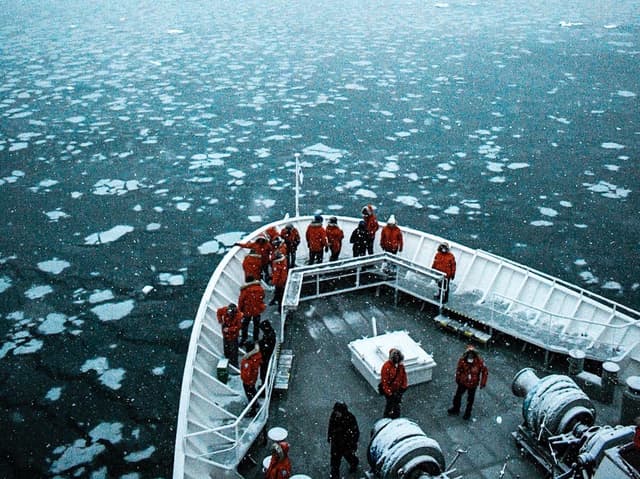
Day 5 - Paradise Bay & Penguins at Neko Harbor
We woke up this morning to the beautiful views of Paradise Bay, where we took our first zodiac ride through the glaciers along the edge of the bay. It was snowing heavily which added a lot to the experience.
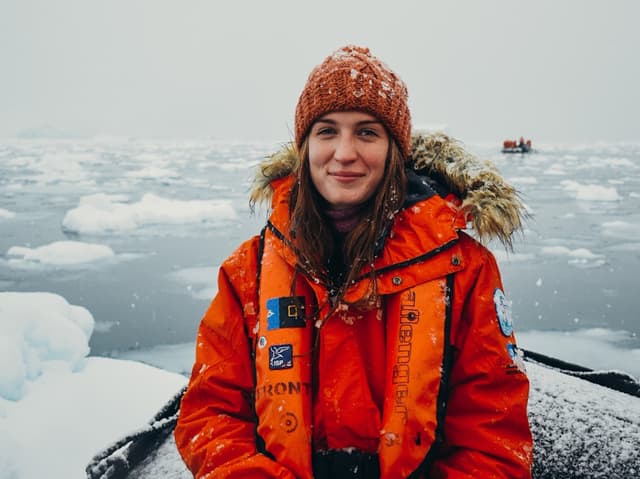
After Paradise Bay, we made our way to Neko Harbor for our first landing and the first experience with penguins!
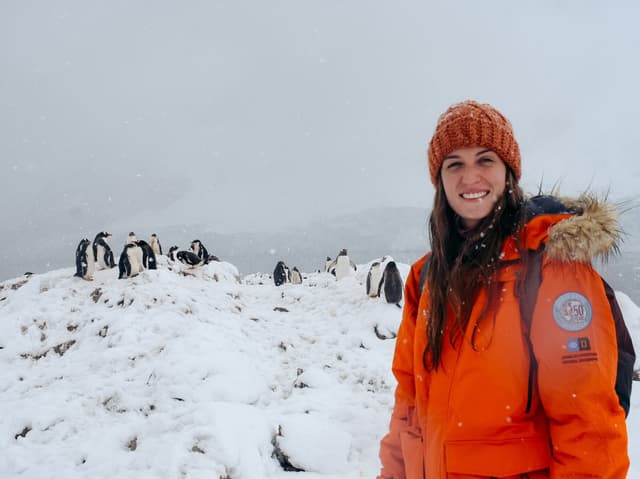
Day 6 - Orcas & the Wilhelmina Bay Ice Sheet
We were woken early this morning by our expedition leader Lucho because we had orca sightings off the boat. We quickly put on our clothes, grabbed our cameras and ran outside to witness two orcas rubbing themselves against an ice berg. We also saw a whole group of penguins running in the other direction. The scenery in Wilhelmina Bay was incredible as well.

The plan for the day was to explore Wilhelmina Bay to look for whales, but after seeing the orcas first thing, we ended up happening upon a giant ice sheet at the edge of the bay. Lucho and some other staff landed on the ice sheet to check if it was safe. After deciding that it was safe, we all got to take the zodiacs to land and walk on the ice sheet. This was definitely a highlight since ice sheets like this aren't commonly found. We were surrounded by huge peaks and felt so small in the best way.
That afternoon, it was looking like some heavy weather was starting to creep in on the western side of the Antarctic Peninsula. Usually, most expeditions spend most of their time on the western side of the peninsula, which offers more of the classic "Antarctic" views but since the weather was creeping in, Lucho decided to have our head around to the eastern side of the Peninsula. So with that, we headed toward the Weddell Sea.

Day 7 - Danger Islands
I woke up this morning early enough to catch sunrise. It was beautiful.
We woke up alongside the Danger Islands at Tay-Head Bay. We took kayaks out from the ship and were able to kayak alongside a glacier and through ice bergs. We saw fur seals which swam right up to our kayak, and adelie penguins.
After kayaking, we landed on the island and walked up to the lookout above Tay-Head Bay where we saw beautiful views and more fur seals (including a mummified one).
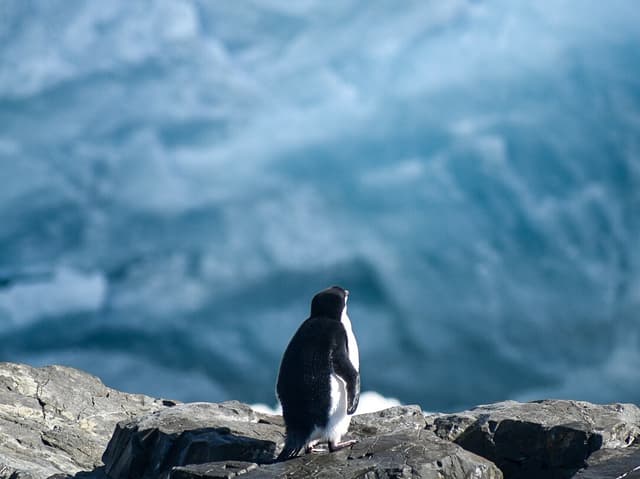
After the Danger Islands, we enjoyed lunch while we sailed to Hope Bay.
At Hope Bay, we hopped in the zodiacs and took a sail through the bay. We saw a colony of adelie penguins from the boats, as well as 3 leopard seals!

Day 8 - James Ross Island, Polar Plunge, & Snow Hill Island
We woke up at James Ross Island and heard from Lucho that we were going to be able to go on a hike on the island! Usually, this island has too much ice around it for landings, but we got lucky, and the landing was safe enough. The group was split into two groups, to do an easy hike and a harder hike. I joined the harder hike group, and we actually climbed up to the top of a peak that it's likely that very few, if any people have ever been on!
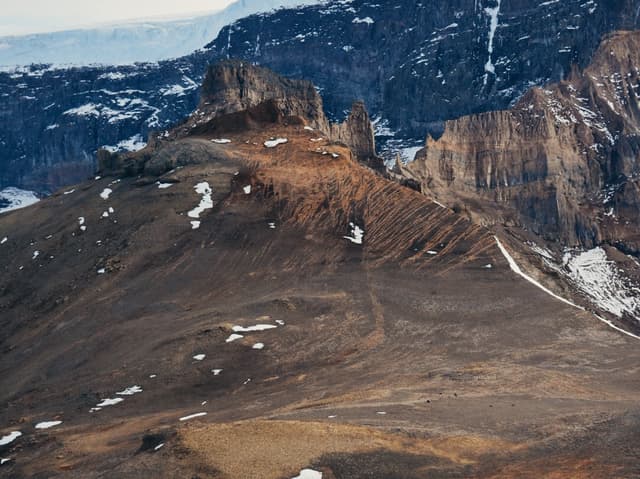
Polar Plunge
After our hike, we headed back to the ship and got ready for the much anticipated polar plunge. The ship had a set up from the mud room at the bottom of the ship that consisted of two zodiacs with a metal stand between them. One by one, we lined up, and took our turns jumping off one of the zodiacs into the water, and then quickly got out and back into the ship to warm up using the metal stand. The staff had hot chocolate and a shot availble upon our reentry to the ship to help us warm up. The whole thing lasted about 5 seconds, and was freaking awesome! I had so much adrenaline running through me.
After the polar plunges, we headed across the inlet from James Ross Island to Snow Hill Island. Here we admired the volcanic dikes, went to the Snow Hill Island hut museum, saw thousands of fossils, and even a giant colossal squid that had been washed up on the beach.
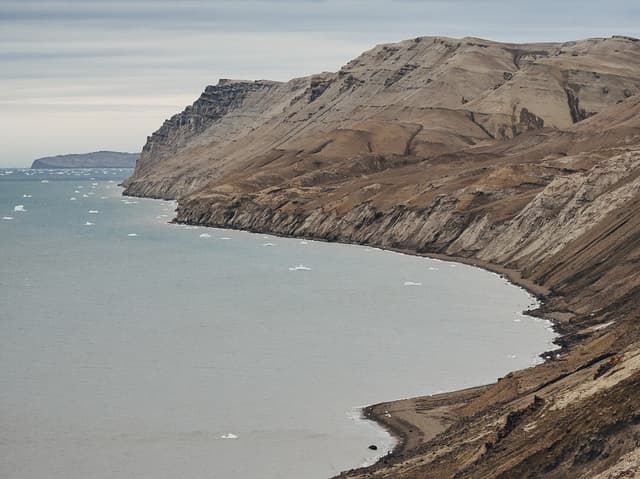
That evening, we headed back around the tip of the peninsula to the South Shetland Islands.
Day 9 - South Shetland Islands
We woke up in the South Shetland Islands, and had a full day of penguins and seals.

Our first stop was Livingston Island, where we went to Hanna Point and Walker Bay. We saw a large amount of chinstrap and gentoo penguins at Hanna Point, as well as a whole harem of elephant seals. Across the water at Walker Bay, we saw more elephant seals as well as some old whale bones leftover from the whaling days.

After Livingston Island, we headed to nearby Deception Island.
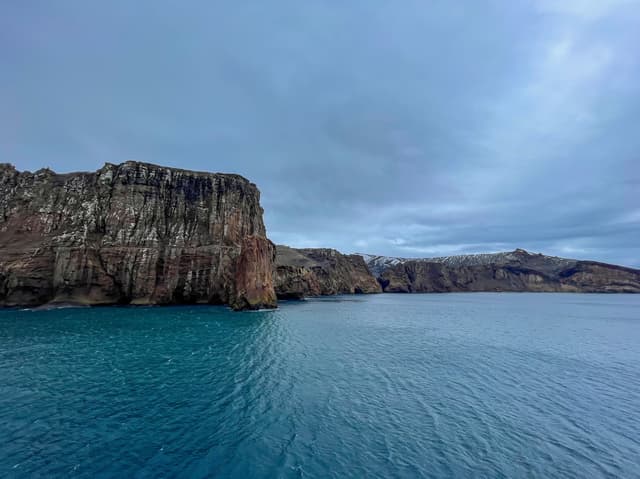
We took the zodiacs for a landing at Baily Head to see the world's largest chinstrap penguin colony.
After seeing the penguin colony, we hopped back on the ship and took it into Whalers Bay. From the ship we admired the beautiful geology of the island, and saw the historic buildings left behind from the whaling days.
This was the end of our time at Antarctica, and as we sat down for dinner, we started our journey back across the Drake Passage.
Day 10-11 - Drake Passage
On this journey back across the Drake Passage, we spent our time again, listening to lectures from the onboard naturalists and National Geographic photographers.
Day 11 - Arrival in Ushuaia
We woke up this morning rounding the Cape Horn. We all headed out on deck to take it in.
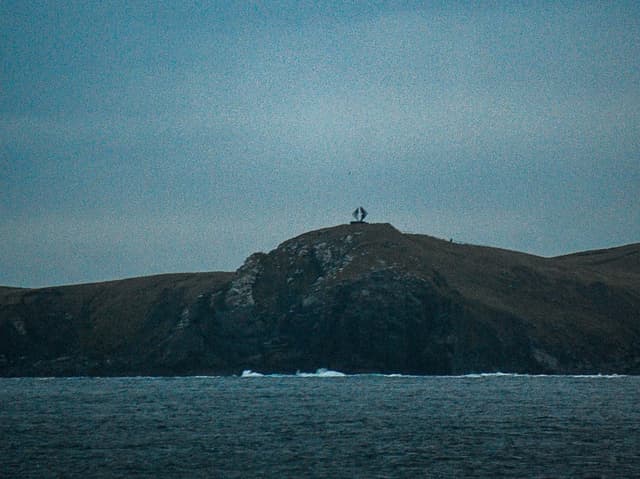
Then we headed down the Beagle Channel, which was incredibly calm and beautiful. We arrived in Ushuaia in the evening and still spent one last night on ship.

Day 12 - Ushuaia and Heading Home
In the morning we left the ship and had a few hours to kill in Ushuaia before our flights back to Miami. We visited the Prison and Maritime Museum, which was super interesting.
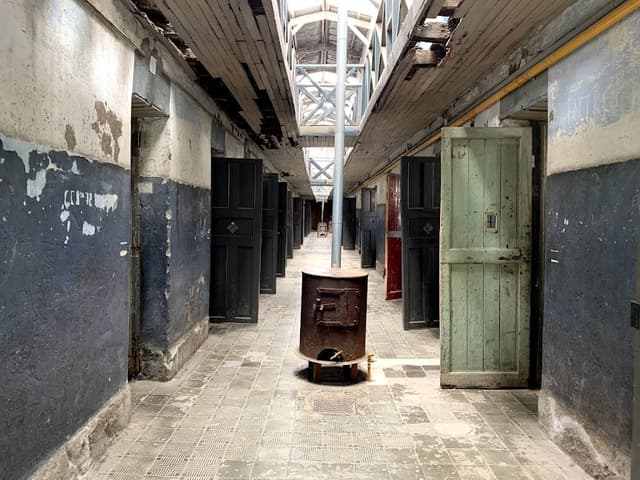
After visiting the museum, we went to the airport to catch our flight back to Miami. The travel time from Ushuaia to Miami was about 17 hours. We had to stop in Nassau to go through security again on the way back because Ushuaia's security is not up to par with TSA standards. It was a little hellish, but sometimes travel can be like that.
How to Book this Trip
There are multiple outfitters that take expeditions to Antarctica. I went with National Geographic & Lindblad Expeditions. They're one of the oldest running companies in the area, and obviously, it's National Geographic, so I knew it would be an epic trip. They're not the cheapest option, but also not the most expensive. Their trips are set up expedition style. The ship was nice, and the food was incredible, but if you're looking for a luxury cruise with hot tubs etc, this is not the trip for you. Going to Antarctica though, is an expedition, so I highly recommend choosing this trip which includes access to National Geographic naturalists & photographers giving talks throughout the trip, and answering all and any of your questions.
The specific trip I took was called Journey to Antarctica. You can learn more and book it here.
FAQ's
I had quite a few questions when I booked this trip, you might have similar ones.
I'm not really into cruises, will I like this one?
Really the only real way to get to Antarctica is on a cruise, unless you're a researcher. I chose to do my trip with National Geographic and Lindblad because I felt out of all of the options, their's was the least "cruise-like". It really did feel like we were on an expedition. The cabins were nice, and the food was incredible, but still, it felt like we were really there to see Antarctica. The ship wasn't huge, but it wasn't small either. I think it had the capacity to fit 250 people, and there were about 180 on our ship, so it never felt crowded either. Even with that many people, every activity felt seamless.
What about seasickness?
I know, it's a super expensive trip, you definitely don't want to have it ruined by sea sickness. I personally had never gotten sea sick in my life before this trip, but the first crossing of the Drake Passage was definitely a little bit rough. Luckily, my parents both get seasick, so they had brought along scoplamine patches, which I ended up using, and my seasickness went away in about an hour. So I recommend speaking with your doctor ahead of time to get those if you're worried. There is also a doctor onboard the ship that has medication in case you're not prepared.
Any questions? Feel free to email me at michrabinov@gmail.com or shoot me a dm on Instagram @michaelarabinov. I'll continue adding to this list as your questions come in.
Did you find this information useful? Any tips are welcome :)
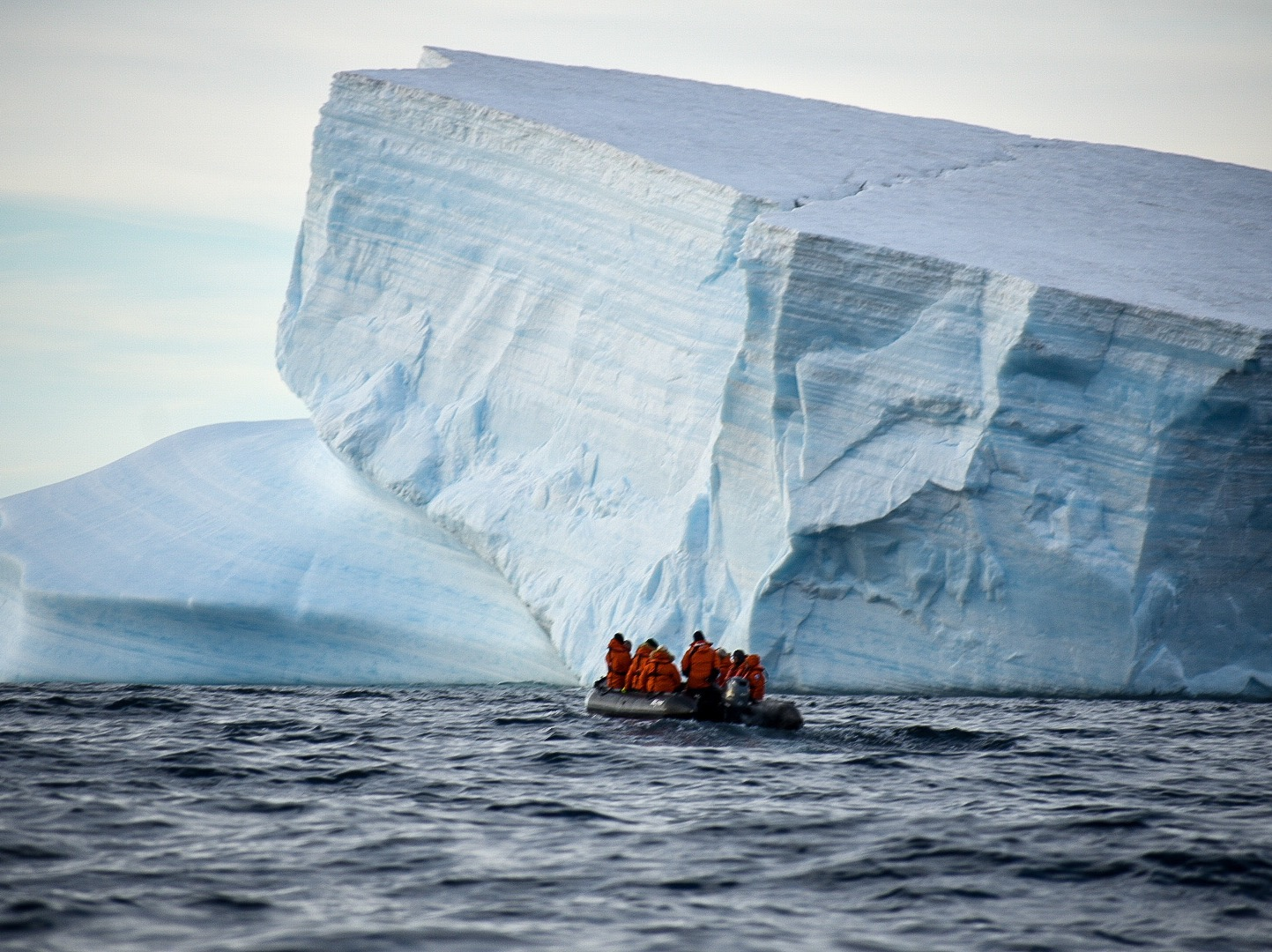

Getting there
We met the group with National Geographic & Lindblad Expeditions in Miami on the 17th in the morning to do a day of Covid testing (PCR) & quarantining in hotel rooms. That evening they held a dinner for us with some information about our travels, and then we headed to the Miami airport to fly to Ushuaia. NatGeo & Lindblad had a charter flight booked for our trip. Pre-covid, we would have met them in Buenos Aires or Santiago, but due to Covid restrictions & the Argentine government's rules, we had to travel as a bubble directly to Ushuaia.
Day 1 - fly to Ushuaia
The flight to Ushuaia was about 14 hours, and was decently comfortable. Since we were on a charter flight, it wasn't full, and we had space to stretch. They also supplied us with travel kits & meals.
Days 2-4 - Arrival in Ushuaia & crossing the Drake Passage

Upon our arrival to Ushuaia, we remained in our travel bubble, and boarded a bus for a short trip to Tierra del Fuego National Park. We drove through the park, and took a catamaran ride through the passage back to Ushuaia.

Once we arrived back in Ushuaia, we boarded our ship, The National Geographic Explorer, and started out across the Drake Passage.
While crossing the Drake, we listened to lectures by many of the National Geographic naturalists onboard on subjects about wildlife, climate change, photography, the history of the area, and more.

Day 4 - Arrive in Antarctica!
In the evening, we finally arrived to catch the last light on Anvers Island from Dallman Bay! We spent the evening then, traveling to Paradise Harbour for the next day's experiences.

Day 5 - Paradise Bay & Penguins at Neko Harbor
We woke up this morning to the beautiful views of Paradise Bay, where we took our first zodiac ride through the glaciers along the edge of the bay. It was snowing heavily which added a lot to the experience.

After Paradise Bay, we made our way to Neko Harbor for our first landing and the first experience with penguins!

Day 6 - Orcas & the Wilhelmina Bay Ice Sheet
We were woken early this morning by our expedition leader Lucho because we had orca sightings off the boat. We quickly put on our clothes, grabbed our cameras and ran outside to witness two orcas rubbing themselves against an ice berg. We also saw a whole group of penguins running in the other direction. The scenery in Wilhelmina Bay was incredible as well.

The plan for the day was to explore Wilhelmina Bay to look for whales, but after seeing the orcas first thing, we ended up happening upon a giant ice sheet at the edge of the bay. Lucho and some other staff landed on the ice sheet to check if it was safe. After deciding that it was safe, we all got to take the zodiacs to land and walk on the ice sheet. This was definitely a highlight since ice sheets like this aren't commonly found. We were surrounded by huge peaks and felt so small in the best way.
That afternoon, it was looking like some heavy weather was starting to creep in on the western side of the Antarctic Peninsula. Usually, most expeditions spend most of their time on the western side of the peninsula, which offers more of the classic "Antarctic" views but since the weather was creeping in, Lucho decided to have our head around to the eastern side of the Peninsula. So with that, we headed toward the Weddell Sea.

Day 7 - Danger Islands
I woke up this morning early enough to catch sunrise. It was beautiful.
We woke up alongside the Danger Islands at Tay-Head Bay. We took kayaks out from the ship and were able to kayak alongside a glacier and through ice bergs. We saw fur seals which swam right up to our kayak, and adelie penguins.
After kayaking, we landed on the island and walked up to the lookout above Tay-Head Bay where we saw beautiful views and more fur seals (including a mummified one).

After the Danger Islands, we enjoyed lunch while we sailed to Hope Bay.
At Hope Bay, we hopped in the zodiacs and took a sail through the bay. We saw a colony of adelie penguins from the boats, as well as 3 leopard seals!

Day 8 - James Ross Island, Polar Plunge, & Snow Hill Island
We woke up at James Ross Island and heard from Lucho that we were going to be able to go on a hike on the island! Usually, this island has too much ice around it for landings, but we got lucky, and the landing was safe enough. The group was split into two groups, to do an easy hike and a harder hike. I joined the harder hike group, and we actually climbed up to the top of a peak that it's likely that very few, if any people have ever been on!

Polar Plunge
After our hike, we headed back to the ship and got ready for the much anticipated polar plunge. The ship had a set up from the mud room at the bottom of the ship that consisted of two zodiacs with a metal stand between them. One by one, we lined up, and took our turns jumping off one of the zodiacs into the water, and then quickly got out and back into the ship to warm up using the metal stand. The staff had hot chocolate and a shot availble upon our reentry to the ship to help us warm up. The whole thing lasted about 5 seconds, and was freaking awesome! I had so much adrenaline running through me.
After the polar plunges, we headed across the inlet from James Ross Island to Snow Hill Island. Here we admired the volcanic dikes, went to the Snow Hill Island hut museum, saw thousands of fossils, and even a giant colossal squid that had been washed up on the beach.

That evening, we headed back around the tip of the peninsula to the South Shetland Islands.
Day 9 - South Shetland Islands
We woke up in the South Shetland Islands, and had a full day of penguins and seals.

Our first stop was Livingston Island, where we went to Hanna Point and Walker Bay. We saw a large amount of chinstrap and gentoo penguins at Hanna Point, as well as a whole harem of elephant seals. Across the water at Walker Bay, we saw more elephant seals as well as some old whale bones leftover from the whaling days.

After Livingston Island, we headed to nearby Deception Island.

We took the zodiacs for a landing at Baily Head to see the world's largest chinstrap penguin colony.
After seeing the penguin colony, we hopped back on the ship and took it into Whalers Bay. From the ship we admired the beautiful geology of the island, and saw the historic buildings left behind from the whaling days.
This was the end of our time at Antarctica, and as we sat down for dinner, we started our journey back across the Drake Passage.
Day 10-11 - Drake Passage
On this journey back across the Drake Passage, we spent our time again, listening to lectures from the onboard naturalists and National Geographic photographers.
Day 11 - Arrival in Ushuaia
We woke up this morning rounding the Cape Horn. We all headed out on deck to take it in.

Then we headed down the Beagle Channel, which was incredibly calm and beautiful. We arrived in Ushuaia in the evening and still spent one last night on ship.

Day 12 - Ushuaia and Heading Home
In the morning we left the ship and had a few hours to kill in Ushuaia before our flights back to Miami. We visited the Prison and Maritime Museum, which was super interesting.

After visiting the museum, we went to the airport to catch our flight back to Miami. The travel time from Ushuaia to Miami was about 17 hours. We had to stop in Nassau to go through security again on the way back because Ushuaia's security is not up to par with TSA standards. It was a little hellish, but sometimes travel can be like that.
How to Book this Trip
There are multiple outfitters that take expeditions to Antarctica. I went with National Geographic & Lindblad Expeditions. They're one of the oldest running companies in the area, and obviously, it's National Geographic, so I knew it would be an epic trip. They're not the cheapest option, but also not the most expensive. Their trips are set up expedition style. The ship was nice, and the food was incredible, but if you're looking for a luxury cruise with hot tubs etc, this is not the trip for you. Going to Antarctica though, is an expedition, so I highly recommend choosing this trip which includes access to National Geographic naturalists & photographers giving talks throughout the trip, and answering all and any of your questions.
The specific trip I took was called Journey to Antarctica. You can learn more and book it here.
FAQ's
I had quite a few questions when I booked this trip, you might have similar ones.
I'm not really into cruises, will I like this one?
Really the only real way to get to Antarctica is on a cruise, unless you're a researcher. I chose to do my trip with National Geographic and Lindblad because I felt out of all of the options, their's was the least "cruise-like". It really did feel like we were on an expedition. The cabins were nice, and the food was incredible, but still, it felt like we were really there to see Antarctica. The ship wasn't huge, but it wasn't small either. I think it had the capacity to fit 250 people, and there were about 180 on our ship, so it never felt crowded either. Even with that many people, every activity felt seamless.
What about seasickness?
I know, it's a super expensive trip, you definitely don't want to have it ruined by sea sickness. I personally had never gotten sea sick in my life before this trip, but the first crossing of the Drake Passage was definitely a little bit rough. Luckily, my parents both get seasick, so they had brought along scoplamine patches, which I ended up using, and my seasickness went away in about an hour. So I recommend speaking with your doctor ahead of time to get those if you're worried. There is also a doctor onboard the ship that has medication in case you're not prepared.
Any questions? Feel free to email me at michrabinov@gmail.com or shoot me a dm on Instagram @michaelarabinov. I'll continue adding to this list as your questions come in.
Did you find this information useful? Any tips are welcome :)